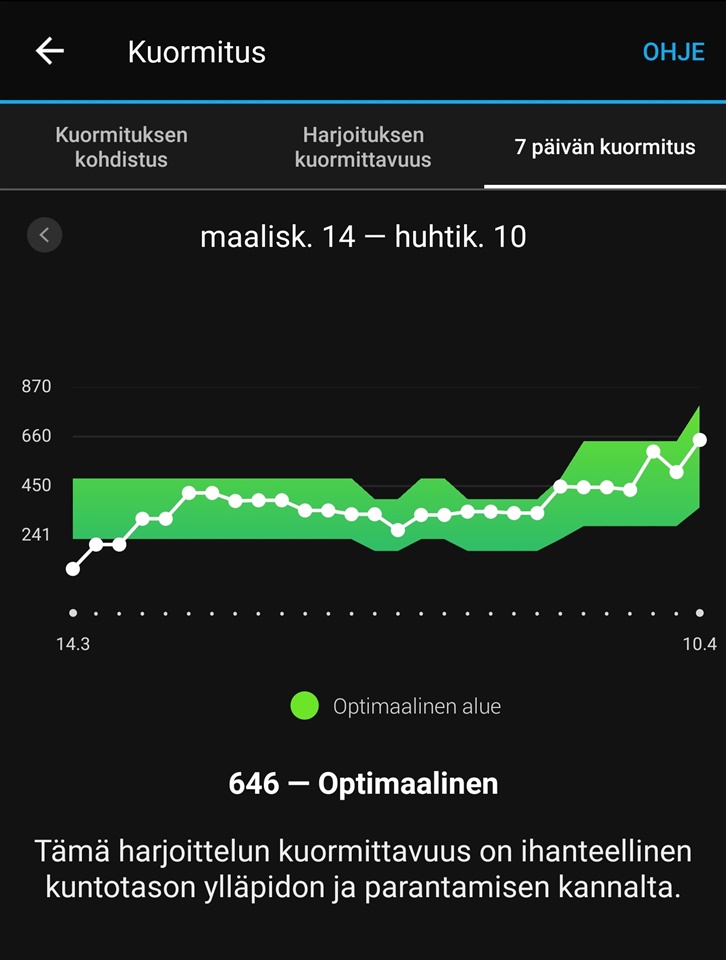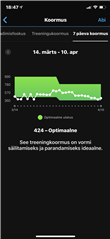Hi!
Im not quite sure have i got total hang of it. For last seven days my training load shows 510pts and text Optimal.
Let say next week im a bit lazy and it goes all the way down 220pts and it still says optimal? Should it be some static number, lets say example 300pts (for my fittnes level) and under that it is not optimal and above is. Going way above should say "too hard" or what ever.
Or am i misunderatanding the whole thing? I feel like i could go to 1000pts and still says optimal. That dosen't make any sense.
I have seen it go down to "too small, not gaining any advantage" when i was sick. It was like 50pts. That i understand. But going all the way from 200pts to let say 500-700pts and everything between that is optimal.
How can several hundreds differiation of points all be optimal?




